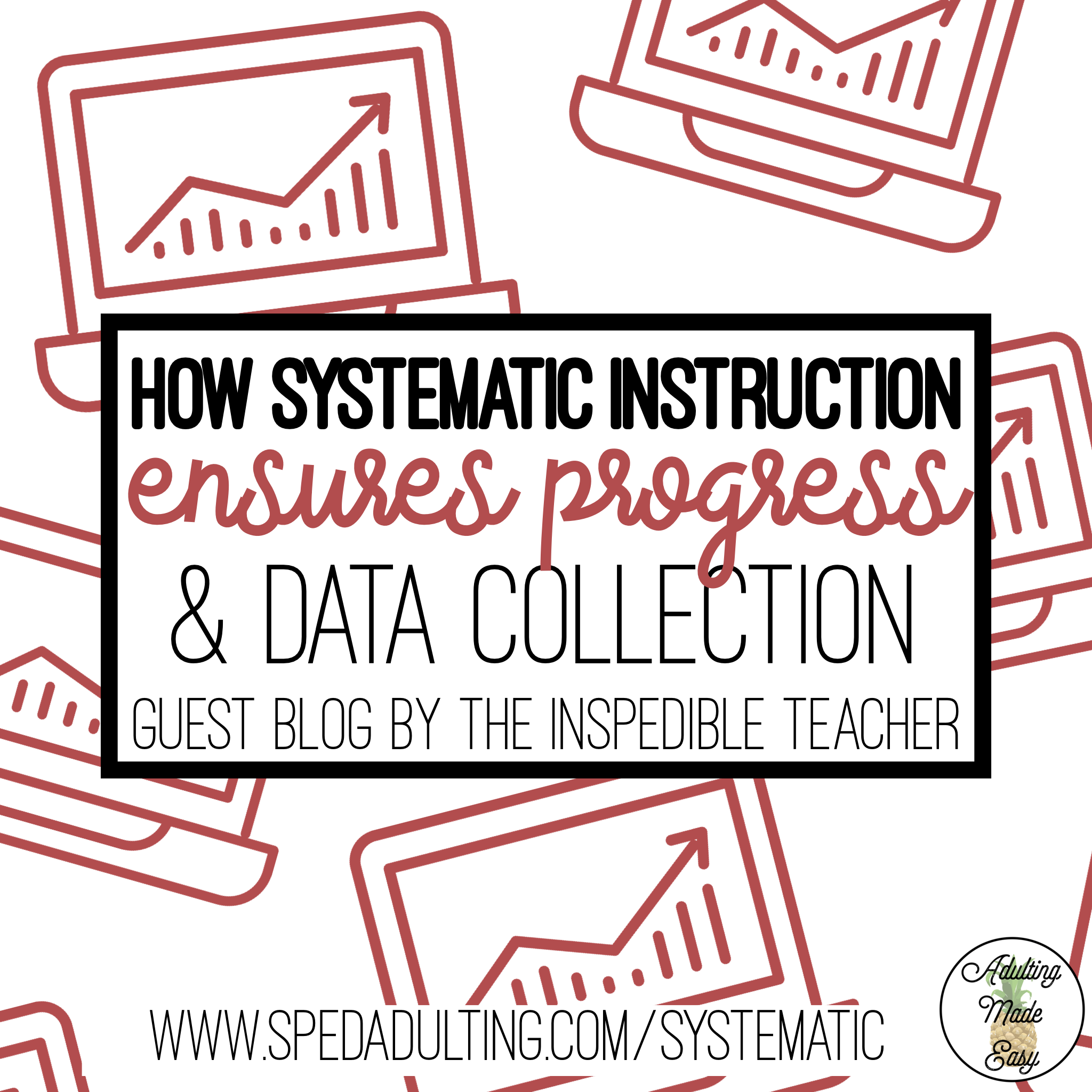Moving your students forward when you’ve hit a plateau.
Working in a program for students with moderate to severe disabilities, it can sometimes feel like we’re not making progress. We get stuck in a rut, our students show success in only certain jobs or tasks, and we lose steam. It happens to all of us. But when the going gets tough, the tough don’t just get going – they use systematic instruction!
Featured Guest Blogger: Miranda Henson, Learning Behavior Specialist, M. A. in ABA
What is Systematic Instruction?
Systematic instruction involves numerous different components, but I’m going to discuss a select few I think are most important to ensuring student progress and helping with what I think is one of the most tedious parts of our jobs as special educators – data collection.
Task analysis
Task analysis involves breaking a task down into simple, discrete steps. A task like wiping the table, for instance, can be broken down into numerous basic steps including getting out the cleaning supply, spraying the table, wiping the table down, and throwing away the paper towel. (For an example of how I break down vocational tasks using task analysis, check out my FREEBIE: Wiping the Table Task Analysis Data Collection.)
Prompt Hierarchies
Prompt hierarchies rank the prompt or cue you give to students by level of intrusiveness. Generally, the hierarchy I use in my program consists of (from most to least intrusive): full physical, partial physical, gestural, verbal, independent/no additional prompt.
Most to Least Prompting
Most to least prompting means you start out by giving your student the most intrusive prompt necessary to elicit a response for that particular step. In most cases, this means giving a full physical/hand-over-hand prompt to ensure your student does exactly what you want them to do. However, some learners may not require this much prompting, so a less intrusive prompt will suffice. You know your students best so you make the call.
Least to Most Prompting
Least to most prompting is the exact opposite of most to least prompting. In this situation, we presume competence and start by giving our students no additional prompting. If they are unable to complete the step after allowing for an independent response, we provide them with the next most intrusive prompt. In my program, this is a verbal prompt. If there is no response or an incorrect response, you continue to provide the next most intrusive prompt until the response is elicited.
Putting It All Into Practice
So how do we actually use systematic instruction in a vocational program? You’re in luck! Systematic instruction can be used for just about anything!
In a program of learners with a variety of needs and skills, systematic instruction is a must. It allows you to have all students work on the same task and receive the support that they need. If you’ve used a task analysis to break down a specific task and have taken baseline data using least to most prompting, you know exactly what level of prompting each student needs to complete each discrete step in a task.
This information is gold to you as a special educator! You use this to select what specific steps you need to target and what intensity of support to give each student. You might have one student who showed that they could complete all of the steps in wiping a table independently except for what happens after they’ve completed wiping the table. Then you know that you really only need to target those few steps with increased intensity. You might choose to use most to least prompting on those few steps to ensure your learner gains those skills accurately.
On the other end of the spectrum, you might have a learner who required full physical prompting in every step of your baseline data collection. After analyzing the data, you may decide to chain the steps in the task by targeting only the first step or first few steps with a less intrusive prompt and use a full physical prompt for the rest so as to not overwhelm your learner.
Final Thoughts
Systematic instruction can absolutely make your job as a special educator. Not only does teaching from a task analysis allow you to break tasks down into manageable pieces, it also gives you all the data you could ever need!
You can make almost any skill or task you’re teaching your students into a task analysis by breaking it down. For more ideas and examples, head to my TpT page and snag this FREEBIE: Making a PB&J Task Analysis Data Collection while you’re at it.

You Might Also Enjoy Reading:
Symbols used in this blog cover photo with permission from Crick Software – The SymbolStix symbols ©2010-2015 News-2-You, Inc and are used under contractual agreement. All rights reserved worldwide.





